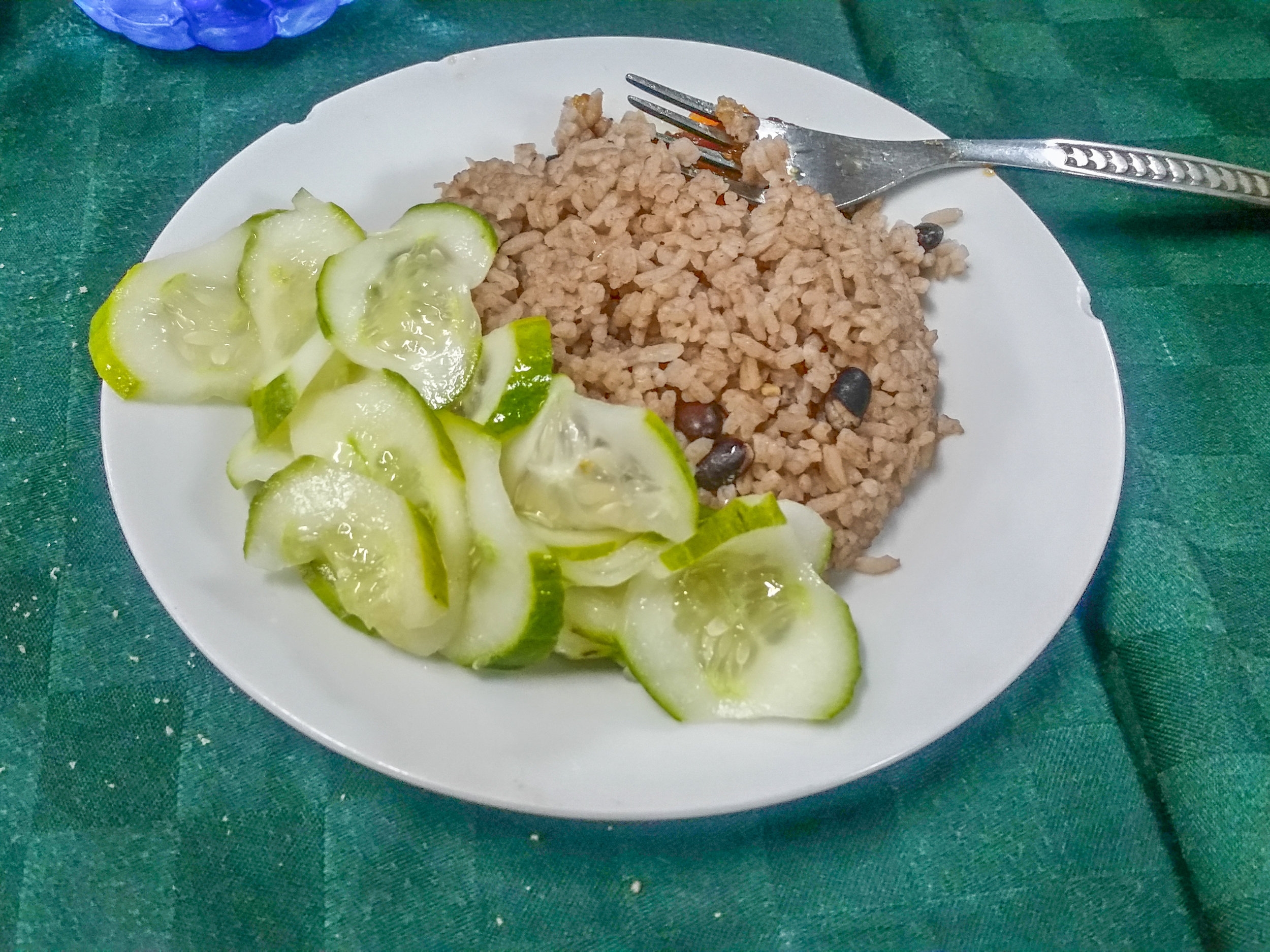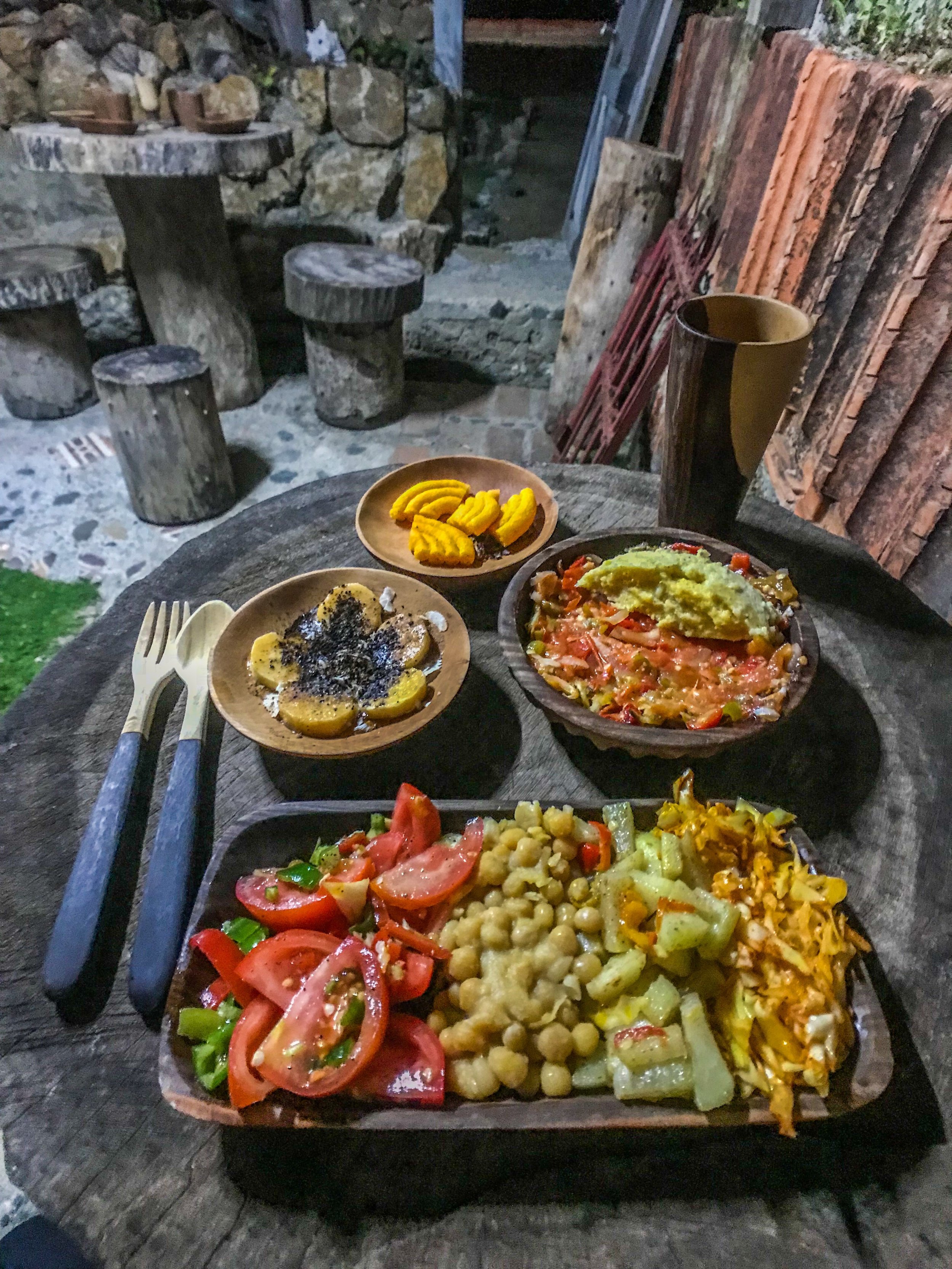Cuba's Local Food Scene isn't What You'd Expect
Typical Cuban Cuisine - Pizza and Spaghetti?
During my first visit to Cuba in 2013, I arrived naively expecting to find all of my favorite Caribbean foods and hoping to tour local community gardens. I anticipated finding similar tropical treats that I had enjoyed in Puerto Rico, the Dominican Republic, Curacao, and other Caribbean islands. I had also heard of Cuba’s agricultural resiliency, which has led to the island being held up as a shining example of urban farming. In fact, ninety percent of fresh produce in Havana is grown within the city’s urban farms and gardens; no small feat for a city of two million people.
Having lived in New York City for nearly 15 years, where we enjoy a strong urban farming scene, I expected to find an even more robust network of community farms, backyard plots, and balcony gardens. I thought the streets would be lined with markets and stalls selling innumerable varieties of brightly colored fruits and vegetables that I had never seen before and may not be able to pronounce.
Instead, I found pushcarts selling only garlic and onions, produce markets offering little more than yucca and papaya (known as fruta bomba), grocery markets with empty shelves, and dozens of restaurants that either were out of beans and vegetables or didn’t serve them to begin with. To my surprise, the most common foods sold on the street were 7-Eleven-style pizza, bland spaghetti, and one-egg omelets on white rolls. Six years after my first trip, I visit the island frequently and lead group trips to Cuba and find that very little has changed in terms of Cuba’s food scene.
The US embargo against Cuba has dramatically hurt the nation’s ability to import food, technology, and goods that would result in better food diversity (among other aspects of life) on the island.
Typical Cuban takeout restaurant
The only items left at a restaurant
Typical Cuban spaghetti - available EVERYWHERE!
The Slow Food Movement in Cuba
The notion of shopping and eating locally has been placed on a pedestal and heralded as a cure-all for many of society’s very tangible problems, ranging from childhood obesity and inner-city health disparities to crop erosion and global warming. Don’t get me wrong – I am a strong proponent of sustainability and local eating, and I ride my bicycle to farmers markets from Union Square (Manhattan) to East New York (Brooklyn). That said, it‘s my impression that Cuba’s embrace of local farming stems more from necessity than from any loftier ideas of sustainability or “getting back to its roots.” Cuba’s embrace of holistic agriculture practices is largely based on the need to produce high yields with minimal use of fossil fuel and other external inputs, which are in short supply.
After countless trips and dozens of conversations with locals, I still don’t understand why Cuba doesn’t grow the broader assortment of vegetables that I’ve found in similar climates. (If you know, please leave a comment!) Most Cubans have never tasted cauliflower, broccoli, zucchini, turnips, or callaloo. A good friend in Havana longs to try any squash besides what I dubbed “Cuba squash,” the single variety of squash that is regularly available, with a color and consistency somewhere between butternut and kabocha.
I am astounded that a meal of locally sourced-food in New York City in December would be more interesting, varied, and flavorful than a locally-sourced meal in Cuba during peak growing season. Even a winter meal in New York City might include a roasted beet salad and polenta topped with sautéed mushrooms and roasted Brussels sprouts. There might even be house-made focaccia topped with carrot-greens pesto as an appetizer and apple pie for dessert, both using locally grown grains, of course.
The typical meal I encountered in Cuban restaurants in 2013 included white rice, pork, fried plantains, and raw shredded cabbage and tomato topped with soybean oil. Salt was always available, pepper was not. Cigars, however, were plentiful, and are still sold at most street pizza and snack shops. While there are a growing number of upscale restaurants in Havana serving creative and artistically-presented dishes to a mostly foreign clientele, the average Cuban restaurant rarely strays from rice, pork, chicken, plantains, and raw cabbage salad.
Farm-to-table cuisine in Las Terrazas, Artemisa
Plant-forward dining in Baracoa, Guantanamo
Sustainable vegetarian restaurant in Havana
It’s exciting to see new farm-to-table restaurants popping up across Cuba and some of them are making truly beautiful and delicious food. That said, it’s important to note that these restaurants are few and far between and they’re serving an almost exclusively tourist crowd.
It’s easy to embrace a local food philosophy when it is served up alongside hundreds of varieties of grains, plump heirloom tomatoes, and winter squashes, especially when topped with imported olive oil and sea salt. The local food revolution is much less exciting when it is restricted to white rice (much of which Cuba imports), raw cabbage, and cucumbers cooked in soybean oil. You read that correctly - Cubans often cook cucumbers! This is not to say Cuba should be criticized for its sustainability efforts, but rather, the island should not be held up as the epitome of food revolution when many of its people are longing for more, better, and different food options.
Old Havana
Much of Cuba’s produce is sold via bicycle, pushcart, or horse cart
How it All Began
During the late 1980s, subsidized oil and chemical inputs from the Soviet Union put Cuba on the path toward oil-based development and industrial agriculture. When the Soviet Union, Cuba’s primary trading partner, collapsed in 1991, Cuba experienced a dramatic reduction in fossil fuels (needed for farm machinery), fertilizers, and pesticides (required for industrial agriculture). Nearly 50 percent of the nation’s food supply was cut off. The average Cuban lost 12 pounds during what Fidel Castro referred to as the “Special Period,” a span of deprivation that continued into the 1990s. Cuba had to completely rethink how it fed its citizens. Twenty five years later, much farming in Cuba continues to be organic and their incredible zero-waste philosophy and recycling efforts far surpass anything found in the United States.
Cuban farmers’ creativity and resiliency is encouraging to say the least. I’ve seen urban farmers in small villages planting vegetables in old helmets and drying herbs in dresser drawers topped with glass panels that capture the sun’s heat. That said, there is not yet a wide embrace of urban farming and despite large backyards, balconies, patios, and ample sun and rain across of the country, most homeowners express no interest in growing their own food.
Work animals remain commonplace in Cuban farming
Organic farming continues to be the norm in Cuba
Street vendors selling produce and sugary desserts
Urban Farming and Community Gardens in Cuba
Cuban community gardens do not exist in the same sense as they do in the United States. Instead, “organopónicos” exist across the island. Cubans created the term to distinguish these small-scale farms from intensive, high-yielding horticulture production systems. While some urban farmers in Cuba have experimented with hydroponics (which grow plants on mineral nutrient-enriched water), the technology depends on a reliable supply of chemical inputs, which Cuba does not have. Instead of chemical inputs, Cuban organic farming relies on organic inputs obtained from crop residues, household waste, and animal manure - hence the term “organopónico.” Note: organopónico refers to both the technology and the garden, which can be found in vacant lots, roadsides, and building sites, among other settings.
It’s possible to visit organopónicos (particularly in and around Havana) and sustainable food and agriculture tours to Cuba are becoming more popular. (Contact me if you’d like help planning a food and farming trip to Cuba.) Farm to table restaurants exist in Cuba though they may not be referred to as such. And even though there is not a personal interest in urban farming among many Cubans, most would be quick to brag that their fruits and vegetables are grown without pesticides (unlike in the United States, they’ll likely add).
Not So Super Supermarkets
To really understand Cuba’s food system and the challenges that locals face to feed their families, it’s necessary to explore the various places that Cubans purchase their food. While some purchase vegetables directly from organic farms, the vast majority purchase fruits and vegetables from street carts and produce stalls before stopping at the meat shop, the government-issued egg shop, the bakery (or bread pushcart), and the oddly stocked and often empty mercado.
One-stop shop supermarkets don’t exist in Cuba and the markets that do exist are far from super. Instead of fully stocked mega markets, locals rely on a variety of stores to do their shopping. Sure, there are stores that resemble supermarkets but many of the shelves are bare and the selection is sporadic and unreliable. Think Cuban rum, off-season Pringles potato chips from Venezuela, overpriced jam, and whatever the heck is canned “carne turistica” (tourist meat) from Eastern Europe.
Cuba is unlikely to be voted a top foodie destination in the near future but what the country’s food system lacks in variety, its people more than make up for with their warmth and generosity. Cuba is unlike any other place on earth and it remains a thoroughly interesting and thrilling destination.
Related Articles about Cuba
See my previous blog posts to get a feel for the day-to-day life that few tourists encounter, what to pack, what to expect, and what to know.
The ULTIMATE Cuba Travel Guide: Everything you need to know
What to Know Before Booking an AirBnB in Cuba
Tips for Solo Female Travelers in Cuba
Is it Still Legal to Visit Cuba?
Cuba's Zero-Waste Recycling Like You've Never Seen it Before
Spaghetti with Mustard: Not What You Expected from Cuban Food













